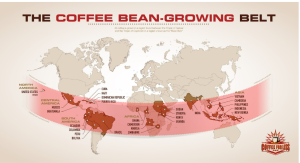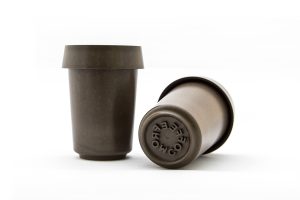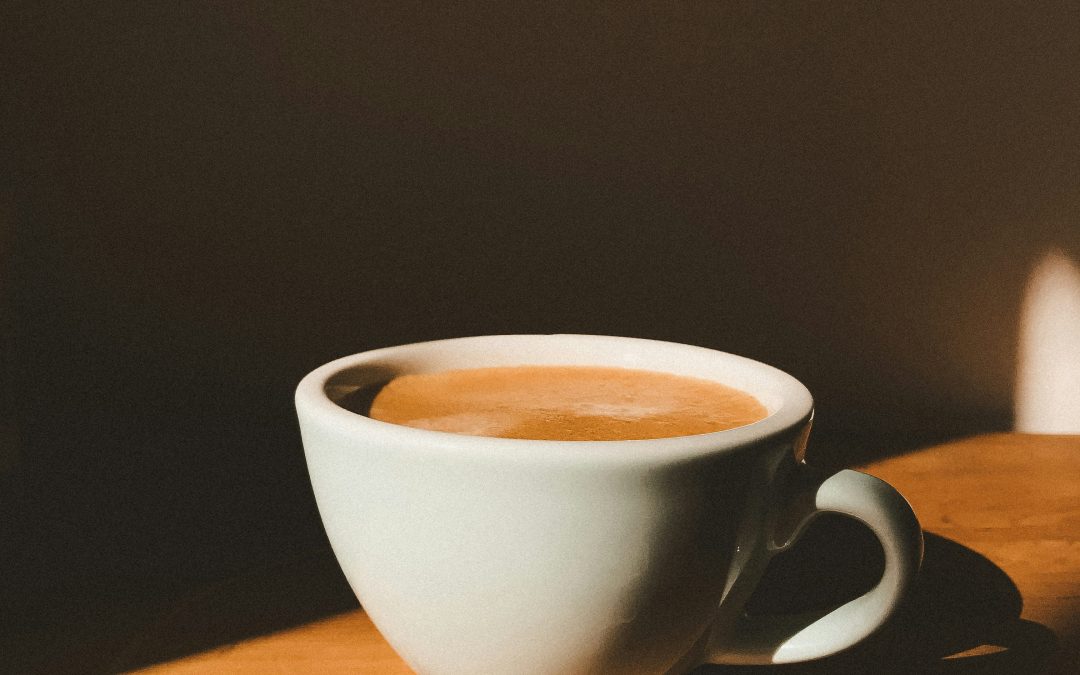Coffee is more than just a beverage; it’s a global phenomenon with deep cultural roots and a fascinating lifecycle. From the humble beginnings of a coffee plant to the final sip from your cup, coffee undergoes a complex journey that involves cultivation, processing, roasting, brewing, and finally, consumption. But the story doesn’t end there. In recent years, innovative companies have found ways to repurpose coffee waste into valuable, eco-friendly products. This article explores the complete lifecycle of coffee beans, highlighting their cultural significance and the sustainable practices transforming the industry, but a bove all the intent is to understand what happens after.
1. The Origin of Coffee
1.1 Cultivation and Growth
Coffee cultivation begins with the planting of coffee seeds, often referred to as coffee beans. These beans are typically derived from two main species: Coffea Arabica and Coffea Robusta. Coffea Arabica, known for its superior flavor and aromatic qualities, constitutes about 60-70% of global coffee production. Coffea Robusta, while less prestigious, is valued for its higher caffeine content and resistance to diseases.
Coffee plants thrive in the “Coffee Belt,” an equatorial zone between the Tropics of Cancer and Capricorn. This region provides the optimal conditions for coffee cultivation: moderate temperatures, adequate rainfall, and rich, well-drained soils. Key coffee-producing countries include Brazil, Vietnam, Colombia, Ethiopia, and Honduras.
1.2 Labour Conditions in the Coffee Belt
The coffee industry, despite its global popularity, has long been associated with challenging labor conditions. In many regions of the Coffee Belt, which spans across Latin America, Africa, and Asia, coffee farmers and laborers face low wages, poor working conditions, and limited access to healthcare and education. These conditions are exacerbated by volatile coffee prices and the significant power imbalance between small-scale farmers and large multinational buyers.

coffee belt credit : vividimages
Instances of labor exploitation, child labor and modern slavery, have been reported in coffee-producing countries. For example, in 2019, media investigations and reports highlighted the use of forced labor on coffee plantations in Brazil, the world’s largest coffee producer. These reports led to increased scrutiny and investigations by both local authorities and international organizations.
Companies such as Nestlé and Jacobs Douwe Egberts have faced criticism and legal challenges over their alleged failure to address labor abuses in their supply chains. In response to these issues, there has been a growing movement towards more ethical sourcing practices. Certifications like Fair Trade and Rainforest Alliance aim to ensure fair wages, safe working conditions, and sustainable farming practices. Some companies are taking proactive steps by engaging in direct trade relationships with farmers, offering them better prices and investing in community development projects.
Efforts to improve labor conditions in the coffee industry are ongoing, but significant challenges remain. Consumers can play a role by supporting brands and certifications committed to ethical sourcing and by advocating for greater transparency and accountability in the coffee supply chain. The importance of looking for certified products in this case is reinforced.
To take a look at what it actually takes to bring coffee to your table watch thi video of TedEd
2. Properties of Coffee
Coffee is cherished not only for its stimulating effects but also for its rich chemical composition. Key components include:
- Caffeine: A natural stimulant that enhances alertness and concentration.
- Antioxidants: Compounds such as chlorogenic acids that help protect the body against oxidative stress.
- Essential Nutrients: Coffee contains small amounts of vitamins and minerals like B vitamins, magnesium, and potassium.
Furthermore according to dr. Andrew Huberman of Stanford university ideally we ought to consume coffee 90-120 minutes after waking up not immediately. This will help with our circadian rythm and help us sleep better.
3. Coffee’s Cultural Significance
3.1 Historical Context
Coffee’s history dates back to the 9th century when it was first discovered in Ethiopia. Legend has it that a goat herder named Kaldi noticed his goats becoming unusually energetic after eating the berries from a certain tree. Intrigued, Kaldi tried the berries himself and experienced a similar boost in energy. This discovery soon spread to monasteries, where monks used the berries to stay awake during long prayers.
By the 15th century, coffee had reached the Arabian Peninsula, where it became a staple in Sufi monasteries. The beverage spread rapidly throughout the Islamic world and into Europe, eventually making its way to the Americas. Coffeehouses, known as qahveh khaneh, began to appear in cities across the Middle East, serving as hubs for social interaction, intellectual discussion, and commerce.
3.2 Coffee culture today
Nowadays the ways in which people consume coffee are as diverse as the cultures that cherish it. In Italy, espresso is a daily ritual, often enjoyed standing at a bar. In the United States, coffee to-go is a staple of busy lifestyles. Scandinavian countries, known for their high per capita coffee consumption, favor strong, black coffee, while countries like Turkey and Greece have unique preparation methods that produce thick, unfiltered brews.
Coffee’s social experience is equally important. Coffeehouses and cafes serve as communal spaces where people gather to work, socialize, and relax. The third-wave coffee movement has further elevated coffee consumption, emphasizing artisanal practices, direct trade relationships with farmers, and a focus on sustainability and quality.
And so what happens then?
4. Coffee Waste and Environmental Impact
We are taking a look at what happens to the coffee waste after the brewing , that is after we have consumed our coffee.
The coffee industry, while beloved worldwide, generates significant waste at every stage of its production and consumption cycle.
here we will be looking as what happens to the coffe waste after it has been brewed and After we have thoroughly enjoyed our cup of beffee be it an espresso, cappucciono filtered or any other type of brew.
Once coffee is brewed, the used grounds are often discarded. Globally, millions of tons of spent coffee grounds end up in landfills each year. When these grounds decompose anaerobically (without oxygen) in landfills, they produce methane, a greenhouse gas that is significantly more potent than carbon dioxide in its contribution to global warming. This poses a substantial environmental challenge, as the widespread consumption of coffee results in a large volume of waste.
so some deisgners have come to the rescue – here I shall just mae a couple.
-
Coffeefrom .
Coffeefrom® is an innovative startup with a social vocation, based in Milan, Italy, that is reshaping the bioeconomy sector. Founded in 2022, Coffeefrom® innovatively transforms industrial coffee grounds into high-quality thermoplastic materials. This process not only reclaims what would otherwise be organic residues but also greatly diminishes the reliance on virgin raw materials in the plastics industry, underscoring the company’s dedication to environmental sustainability and social responsibility.
Coffeefrom® has crafted three distinct materials — Coffeefrom® Bio, Coffeefrom® Eco, and Coffeefrom® Strong — each designed with unique properties to meet diverse needs such as biodegradability and high heat resistance. Notably, Coffeefrom® Strong has achieved the EU 10/2011 declaration of conformity for food contact, which has opened new opportunities in the packaging sector. Coffeefrom®‘s market reach is extensive, partnering with industries all over the world and coming from various sectors such as automotive, fashion, medical, packaging, and 3D printing.
One standout application of these biopolymers is the Coffeefrom® Espresso Cup, which not only showcases the company’s innovative capabilities but also offers co-marketing opportunities for brands seeking bio-based, innovative merchandise.

credit coffeefrom

*
for further information you can contact : website_ coffeefrom
The market is moving fast and coffee waste can have further and further use in industries such as in cosmetics, foods, and nutraceuticals, building materials, product design.
For a more extensive view on companies that use coffee waste to develop and manufacture new products hop into the biophilic Hub community our materials monday is being constantly updated.
